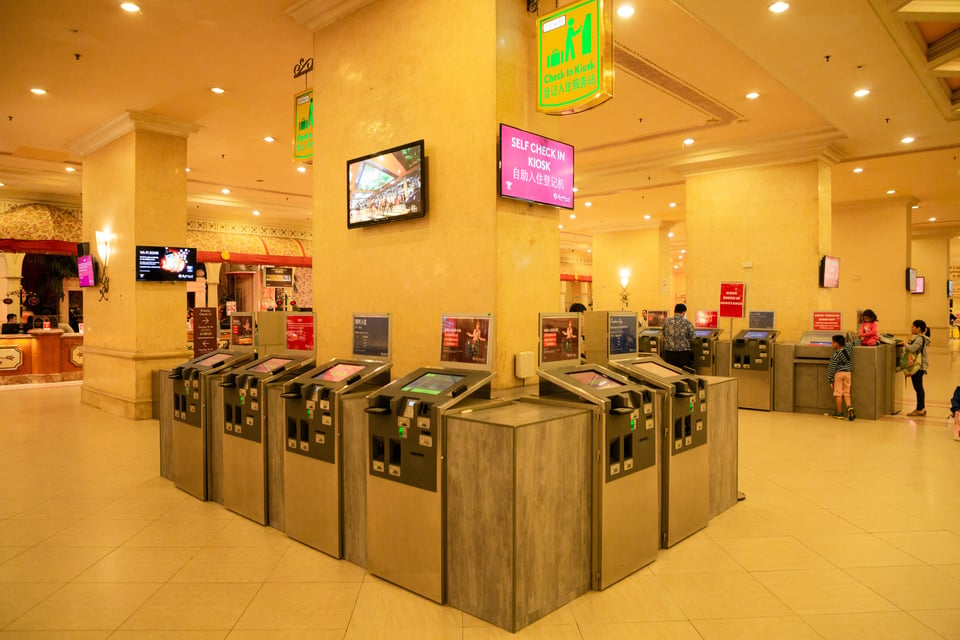How Kiosks, Digital Signage and Mobile Solutions Enhance Hospitality Experiences
2020 led to an increase in the use of technology to safeguard and enhance consumer experiences in the hospitality industry, and as we look to the future, many of these innovations are likely to stick. According to research from Piplsay, 51% of Americans indicated an increased preference for touchless technology last year. Operators that have not yet adopted these features are finding it challenging to bring customers back to their businesses.
Some organizations upgraded older systems or implemented emerging technologies for the first time over the last twelve months. In either case, technology investments demonstrated how drastically they can enhance the agility of the food and beverage and travel industries, helping them adapt to changing consumer preferences and demands. In fact, a recent study conducted by Panasonic and Harvard Business Review found that 100% of all survey respondents believed last year’s situation increased the urgency to adopt transformational technologies. Ideally, this includes having an entire suite of technologies incorporated into a single ecosystem that can scale to support an organization’s growth.
So, how will emerging solutions serve as an essential tool moving forward, and what types of technology can we expect to see as the industry reopens and works toward full occupancy?
Addressing new expectations for convenience
In the food and beverage and travel industries, consumers are looking for differentiated experiences. This can be achieved with the thoughtful integration of technology. For example, kiosks decrease wait times - meaning customers can easily place an order on their own time or start enjoying vacation quicker with a shorter check-in process. These kiosk solutions also collect valuable data on consumers, including room preferences or recent food orders, so that during their next visit, suggestions can be made for a style of room and included amenities, or what to eat for dinner that night. This customization can provide a sense of comfort and build loyalty with returning customers.
Informing consumer experiences
Many consumers are understandably concerned about the cleanliness of high-touch areas. While thorough sanitation does provide some reassurance, leveraging technology that better informs and services consumers can eliminate the touchpoints and provide a safer and more convenient option for them.
Digital signage offers a large-scale, contactless way of sharing information with consumers. As displays continue to become more affordable, it is a cost-effective way for properties to engage with customers. In hotels, digital signage is critically important. It can be leveraged within meeting spaces or throughout hotels as wayfinding and information tools to hotel guests. By incorporating digital signage throughout the hotel, businesses can deliver relevant content quickly and efficiently and eliminate high touchpoint surfaces.
Touchless hospitality also empowers staff to be mobile. A traditional desktop restricts staff to their workstation, when instead they can walk around the property and interact with guests. For example, employees can utilize ruggedized tablets and handheld devices to speed up service while ensuring an optimal employee-consumer relationship. In hotel restaurants, these devices allow employees to turn their devices into mobile POS systems by integrating the devices with barcode scanners and payment sleds. As restaurants adopt new technologies, they can have customers pay via mobile device or QR code. This method cuts down on the time it takes a server get the bill and consumers can get to their next activity sooner.
Service automation solutions
As restaurants return to their previous pace, data is essential to their success. With back-office analytics, organizations get real-time data that provides key insights into peak hours of operation, employee schedules and foot traffic. Access to real-time reporting for collaboration and immediate, data-driven decision-making can have an immediate impact on improving profitability. For instance, automation solutions help streamline operations with seamless communication between departments and control and assign tasks from a single dashboard.
The bottom line
When hotels and restaurants utilize a holistic solution that integrates all of their technology into a single solution, they can optimize operations throughout the organization. Consumers have higher expectations for not only safety and security, but also seamless and highly customized experiences. There is no doubt that implementing new technology like kiosks, digital signage and mobile solutions will become the norm.

